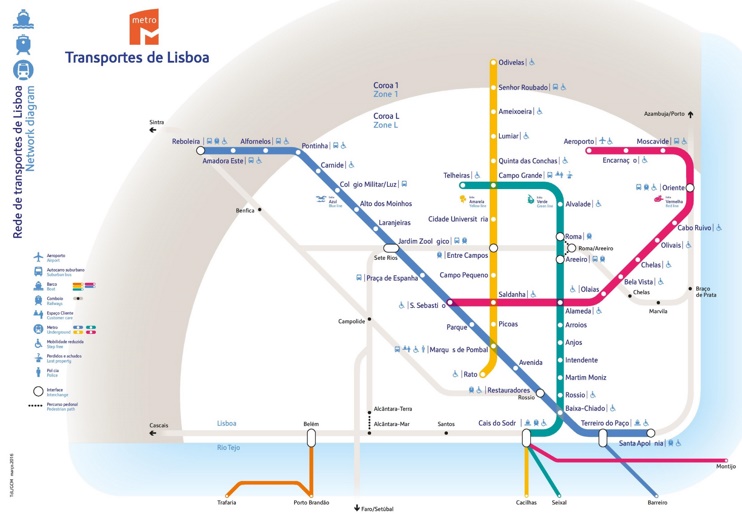Lisbon Metro Map
Description:
This map shows Lisbon Metro lines and stations.
About Lisbon Metro
The Lisbon Metro (Portuguese: Metropolitano de Lisboa) is the rapid transit system serving Lisbon, Portugal's capital city. Inaugurated in December 1959, it was the first metro system in Portugal. The network consists of four lines - Yellow, Blue, Green, and Red - covering a total length of 27.6 miles (44.5 kilometers) and serving 56 stations.
The metro system connects major transportation hubs and landmarks, including Lisbon Airport, Santa Apolónia Railway Station, and Oriente Station. Operating hours are from 6:30 AM to 1:00 AM daily, with trains running at intervals of 3 to 12 minutes depending on the time of day and line. The system serves approximately 173 million passengers annually, making it the most heavily used public transportation system in the Lisbon metropolitan area.
Each line is distinguished by its color and serves different parts of the city. The Blue Line (Linha Azul) runs north-south, connecting Reboleira to Santa Apolónia. The Yellow Line (Linha Amarela) connects Rato to Odivelas. The Green Line (Linha Verde) links Telheiras to Cais do Sodré, while the Red Line (Linha Vermelha) connects São Sebastião to Aeroporto.
Many stations feature distinctive architectural designs and art installations, reflecting Portuguese culture and history. Notable examples include the Olaias Station with its colorful glass panels and the Oriente Station with its modern architectural style. The system uses a contactless card system called Viva Viagem for fare payment, which can be used across various public transportation modes in Lisbon.
The metro network continues to expand, with plans for new stations and line extensions. The most recent expansion was the extension of the Yellow Line to Rato, completed in 2021. Future plans include the construction of two new circular lines to improve connectivity between existing lines and serve growing neighborhoods.
You may download, print or use the above map for educational, personal and non-commercial purposes. Attribution is required. For any website, blog, scientific research or e-book, you must place a hyperlink (to this page) with an attribution next to the image used.
Last Updated: January 18, 2025

